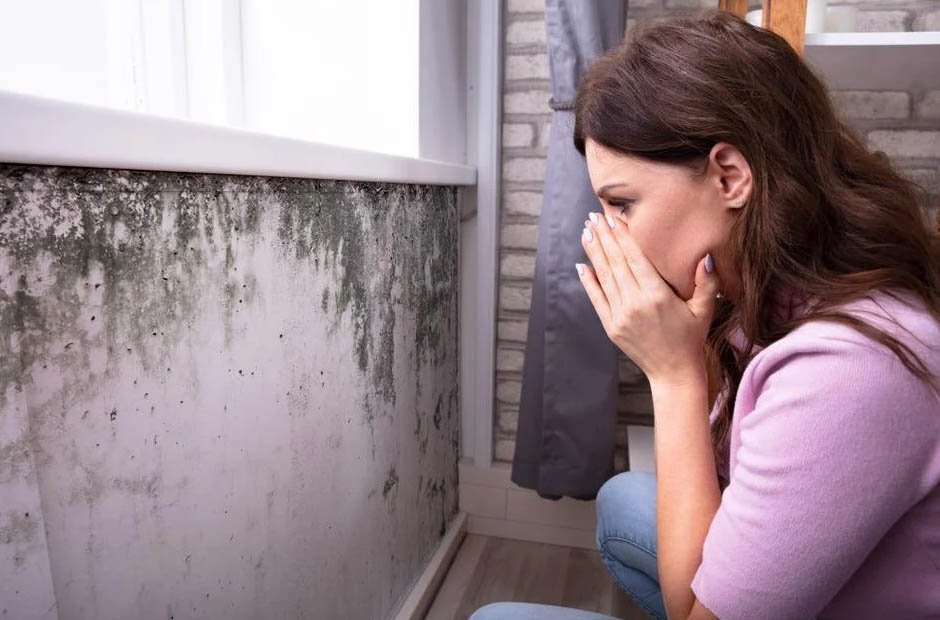Mold and mildew are fungi that thrive in damp and humid environments. While they might seem like harmless spots or discolorations on your walls, ceilings, or other surfaces, they pose significant health risks. Here’s a closer look at why mold and mildew are bad for your health and what you can do to combat their growth.
Why Mold and Mildew are Harmful
Respiratory Issues: Mold and mildew release spores into the air, which can be inhaled. This can cause respiratory problems, especially in individuals with asthma or allergies. Symptoms may include wheezing, shortness of breath, and nasal congestion.
Allergic Reactions: Exposure to mold can lead to allergic reactions, which can manifest as sneezing, runny or stuffy nose, itchy or watery eyes, and skin rashes.
Immune System Suppression: Some studies suggest that long-term exposure to mold can suppress the immune system, making individuals more susceptible to infections.
Mycotoxin Production: Certain molds produce mycotoxins, which can be harmful when ingested, inhaled, or come into contact with the skin. These toxins can cause a range of health issues, from short-term irritation to long-term health effects like organ damage.
Mental Health Effects: There’s growing evidence that mold exposure can affect the central nervous system, leading to symptoms like headaches, dizziness, fatigue, and even mood swings or depression in some individuals.
Combatting Mold and Mildew Growth
Control Humidity: Mold and mildew thrive in humid conditions. Using dehumidifiers or air conditioners to maintain indoor humidity levels between 30-50% can prevent their growth.
Ensure Proper Ventilation: Areas of your home that are frequently exposed to moisture, such as bathrooms, kitchens, and basements, should have good ventilation. Exhaust fans can be particularly effective.
Regularly Inspect & Repair Leaks: Check for leaks in your roof, walls, and plumbing. Address any signs of moisture or water damage promptly.
Clean & Dry Wet Areas: Whether it’s due to a spill, leak, or flood, ensure that wet areas are cleaned and dried within 24-48 hours to prevent mold growth.
Mold-Resistant Products: When renovating or repairing your home, consider using mold-resistant drywall or paint, especially in areas prone to moisture.
Clean Mold Spots: Small areas of mold can be cleaned using a mixture of water and detergent. For larger infestations or if mold is in your home’s HVAC systems, it’s wise to consult professionals.
Natural Solutions: For mild cases, natural solutions like white vinegar or tea tree oil can be effective mold killers. However, always test a small area first and ensure proper ventilation when using these methods.
Replace Contaminated Items: Sometimes, mold-infested items, like carpets or ceiling tiles, may need to be thrown away if they cannot be adequately cleaned. If you want to learn more about how to get rid of a mildew smell out of your carpet read this.
Hire a Restoration Company: For severe mold infestations or when mold is present after significant water damage, it’s advisable to hire a professional restoration company. These experts have specialized equipment, techniques, and experience to identify, eliminate, and prevent mold growth. They can assess the extent of the damage, provide recommendations for remediation, and ensure that mold is completely eradicated. Restoration companies are particularly useful in situations where the mold growth might be extensive but not immediately visible, such as behind walls, under flooring, or even in your carpets.
Conclusion
Mold and mildew are more than just unsightly; they pose real health risks that can have lasting impacts. By understanding the dangers they present and taking proactive steps to prevent their growth, homeowners can safeguard their health and maintain the integrity of their living spaces. Remember, a mold-free environment is a healthier, happier one.
















